What are diptychs and why do so many photographers enjoy making diptych photography?
Diptychs are a set of two photos you can use to tell a story and emphasise contrast. Or you can create one composition using two entirely different images. The word itself comes from ancient Greek.
Think of diptychs as collages.
If two photos aren’t enough, try out triptychs (three photos). Or even polyptychs (over three images).
You can create them in both Adobe Lightroom and Photoshop, or other post-processing software.
And here are a few ideas to get you started.
In photography, a single movement can change an entire image. This is particularly evident in sports photography. Taking a photo a second too early or too late will result in an unsuccessful shot.
Emphasise this by capturing busy locations, people, and animals. This is a great way to sharpen your observation and action photography skills.
To make the most of your photo shoot, take photos in burst mode. This will ensure that you get a variety of movements, compositions, and angles to work with.
Something I recently learned is the importance of not deleting blurry photos. Even if a photo looks too busy or unfocused, leave it.
Blurry photos can create a sense of mystery, dreaminess, or romance. They might also complement a sharper photo in your diptych photography when placed side by side.
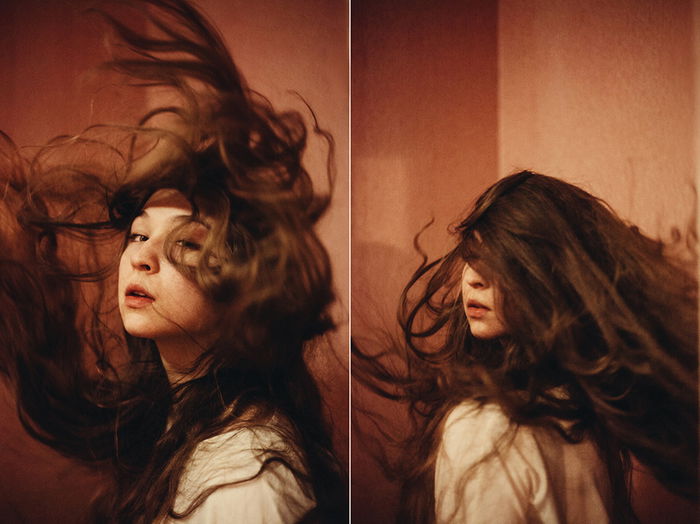
(For the record, you don’t need to own a zoom lens. Take a few steps forward and backward when you take these photos.)
To tell a deeper story about your subject, you can zoom in and out. In the photos above, the tattoo and the model are in focus separately.
This is great for emphasising certain features, like tattoos. These can say a lot about a person, before you focus back on them.
This idea is particularly great for classical, fine art, family, and couple photo shoots. But don’t let it limit you to portrait photography. You can use diptychs for wedding photography or even travel photography.
You can give inanimate objects a voice by putting a spotlight on unique features they might have. For instance, an old house can say a lot about its previous owners.
A pet diptych photography shot can focus on an animal and the name tag on its collar. As you take these photos, focus on simplicity.
You can even incorporate double exposures.

To create diptych photography, you need to improve your ability to find complementary subjects.
To create double exposures, you need to be familiar with an editing program like Photoshop. Then you combine two images to create a visually appealing piece.
As you can tell, the skills required for diptychs and double exposures are quite similar. This is why they work well together.
My favourite double exposure technique is combining photos of people and nature.
Some photographers, like Laura Kok, focus exclusively on diptychs for certain photography projects. But be careful when you work on unique diptych photography like the one above.
The beauty of these pieces is that they stand out. Don’t overdo them unless you’re planning on making a set of photos inspired by double exposures alone.
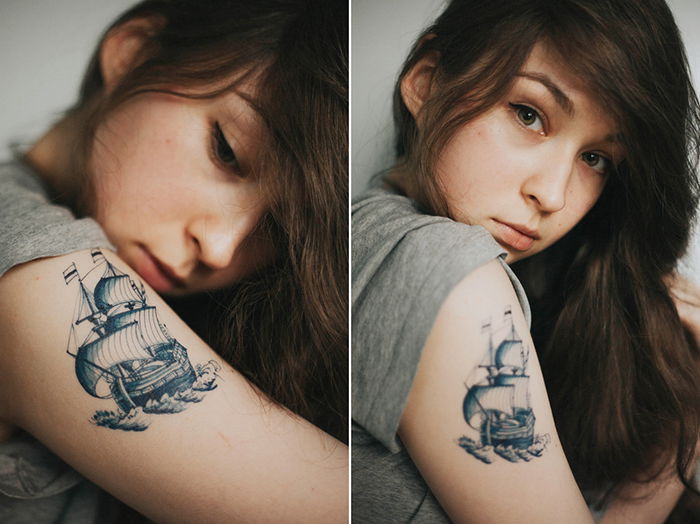
Some of the best diptych photos out there focus on details. Professional diptych photographers know what to look for in any location. It doesn’t matter how simple it is, they can use insignificant elements to their advantage.
If you’re working with limited equipment, props, or lighting, focus on angles. Even the slightest camera movement can make a subject look more flattering.
Different angles can also capture more light, expose you to details you might not have noticed before.
Or they’ll give you more room to experiment with unusual elements like shadows.
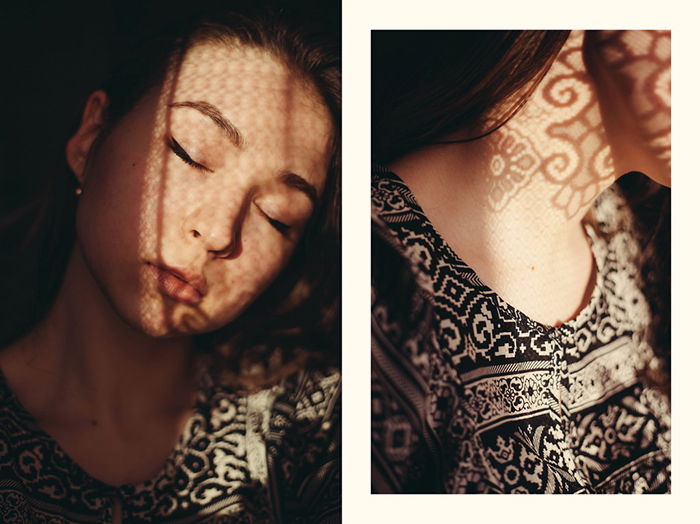
As some people say, one picture is worth ten thousand words. Several pictures are even more powerful when it comes to universal human emotions.
Using diptychs, you can highlight the differences between certain emotions. You can emphasise the intensity of one feeling. Or you can show off similarities between very different expressions.
This is a great opportunity for portrait photographers to sharpen their communication skills.
If you’re working with a model, you’ll have to read their expressions first. Then find the most appropriate ones for your diptych.
Before you do that, make sure you get to know your model first. (I don’t want you to dive into a shoot and feel awkward!)
If you’re a self-portrait photographer, you’ll have more time to experiment with expressions. You’ll also get to release any emotions that might be bothering or overjoying you.
But don’t think of only one photo. Try to create several expressions that will blend into one appealing collage.
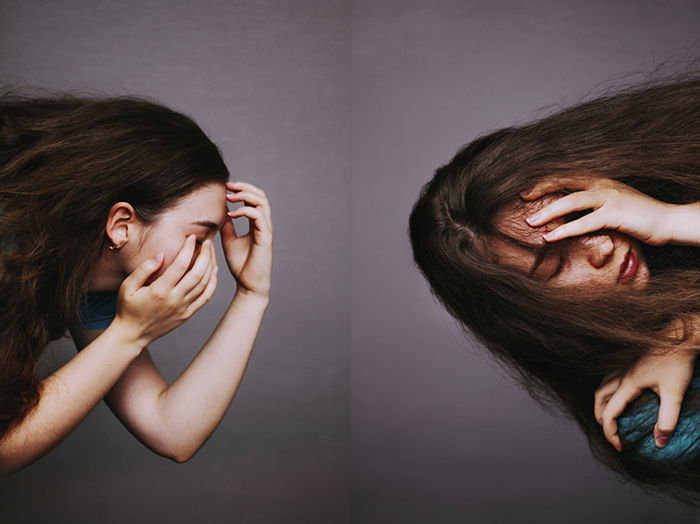
Have you ever needed an excuse to experiment with depth of field without wasting your time? If you take photos with diptychs in mind, you’ll be able to learn and be creative at the same time.
As a portrait photographer, I love soft backgrounds and foregrounds. Because of this, I often stick to f-numbers like f/1.8. Diptychs encourage me to get out of my comfort zone by embracing larger f-numbers like f/6.0.
More often than not, I end up using my newfound knowledge in my other creative projects. This makes my work more diverse.
Think of your favourite and least favourite aperture ranges. Is there a way you could combine them to create a wholesome composition?
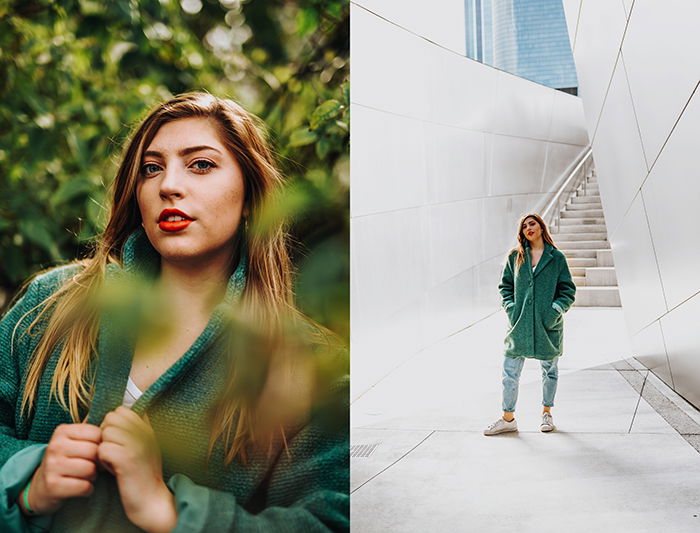
One of the best ways to introduce a subject is to present something they care about. This is often done in books and movies. Characters are described in very specific and (often) relatable ways.
It’s through their possessions that we get to find out what they care about.
In a similar way, you can create familiarity in your diptych photography. Try introducing inanimate objects, pets, and other people to your diptychs.
This is often done in portrait photography. But you can use it in other photography genres.
For example, landscape photographers can tell a deeper story about a location by putting emphasis on a famous landmark. Or by focusing on a distinct feature that other locations don’t have.

If you want to show off someone’s posing skills, why not do it by combining several photos?
Posing diptychs are great for model portfolios. Keep them in mind if you’re planning to work with modelling agencies.
They’re also great for emphasising someone’s personality. And they add more movement to your work.
The more you focus on poses, the easier it will be to communicate with your models. Your subjects don’t need to be professionals.
They don’t even need to be humans! Try photographing animals to create eye-catching posing diptychs.
Or turn your next newborn photography session into a diptych experiment.

Using diptychs, you can focus on different hairstyles, themes, and costumes. All this without spamming your portfolio with hundreds of photos.
A single diptych, triptych, or polyptych counts as one image. It can show off different looks without overwhelming its viewers.
This is ideal for social platforms like Instagram and Flickr. Visually aesthetic galleries are a priority there.
I know this isn’t something every photographer cares about. Nonetheless, it’s still a great way to create a set of images without scattering them all over the place.
If you often work with clients, this can be an efficient way to send them previews in one file, too.

Use diptych photography to emphasise differences in themes, colors, and details. Take, for example, the photo above.
The images showcase different seasons. The contrast between cold and warm tones is so distinct that it’s hard to take your eyes off it.
Your diptych photography ideas can evolve into long-term projects. But they can also be simple contrasts.
Challenge yourself. Find differences in your home, outdoors, at different times of day, etc.
You can even highlight differences by creating artificial contrast in an editing program. (To do this, I use selective color in Photoshop.) This way, you can sharpen your editing and diptych-making skills at the same time!

Diptychs, triptychs, and polyptychs can get you out of a creative slump. They can inspire you to reinvent your portfolio, or help you improve your photo-taking skills.
Using this creative technique has helped me find new clients. Or just enjoy the art of imagination.
The more diptych photography you create, the more observant and appreciative you’ll become. These qualities will help you take your work to the next level within a short period of time.
I encourage you to go out and make a diptych right now. You can either go through your old work or create something new.
I’d love to see what you come up with!